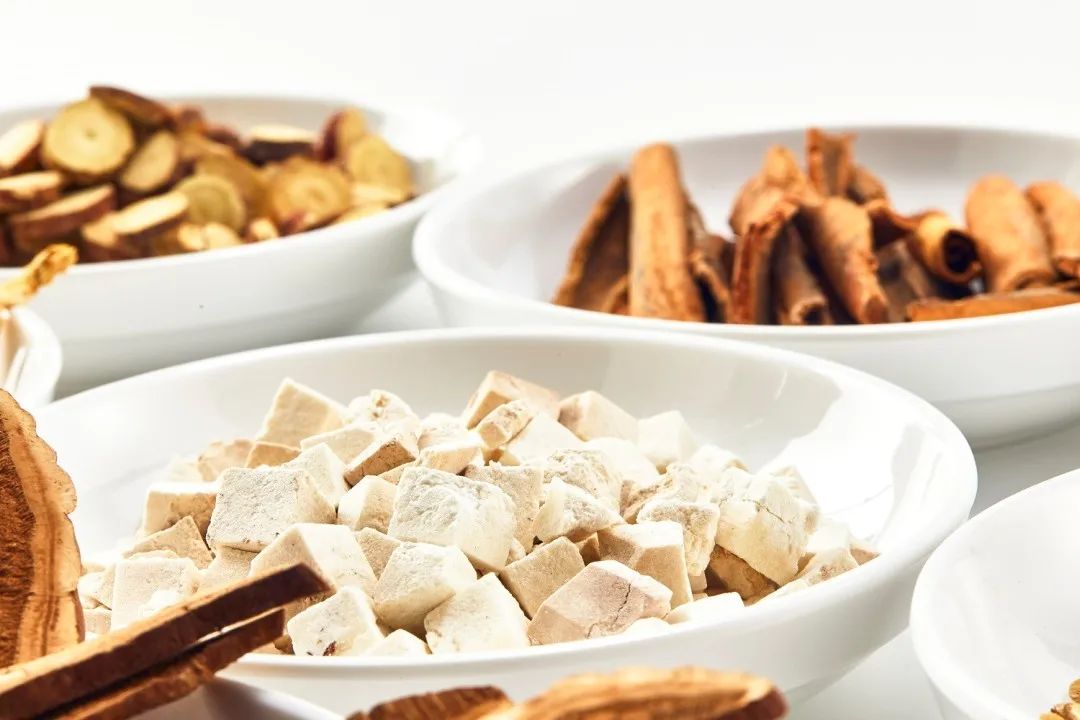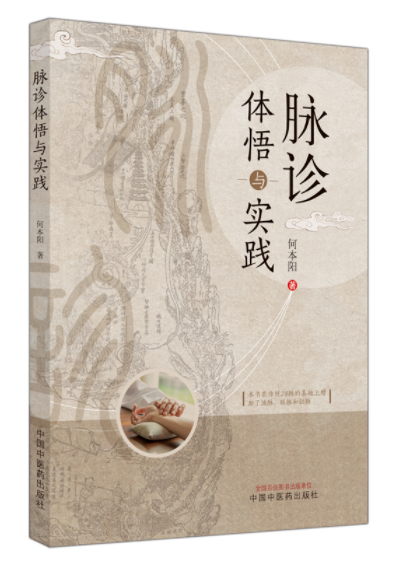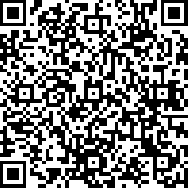Introduction
When first learning about pulse diagnosis, many people easily fall into the misconception that a slippery pulse (hua mai) is indicative of pregnancy, and that only pregnant women exhibit this pulse quality. This is not the case; a slippery pulse can appear in various pathological conditions and may sometimes be found in healthy individuals. Therefore, Traditional Chinese Medicine (TCM) emphasizes the importance of integrating the four diagnostic methods and not relying solely on pulse patterns for diagnosis. Below are two medical cases involving dizziness and a slippery pulse; let us explore how renowned physicians differentiate and treat these conditions.
 1. Characteristics of Slippery Pulse
1. Characteristics of Slippery Pulse
The pulse feels smooth and flowing, akin to pearls rolling on a plate. Ancients described this pulse as “li” (smooth), “zhuo” (pecking), “ying” (nourishing), “zhang” (mark), “lian zhu” (linked pearls), “ti ti ran” (alternating), and “xi yan chen” (soft and sinking).
 2. Principles and Clinical Significance of Slippery Pulse
2. Principles and Clinical Significance of Slippery Pulse
1. Pathogenic Obstruction (Phlegm being the most common)
A slippery pulse indicates an excess of pathogenic factors. When pathogenic qi obstructs the flow of qi and blood, the pulse becomes slippery as it struggles against the obstruction. This is similar to water flowing over stones in a river, creating ripples.
Many pathogenic factors can lead to a slippery pulse, including phlegm-dampness, fluid retention, food stagnation, blood stasis, and qi stagnation. For instance, the “Shang Han Lun” states in section 256: “If the pulse is slippery and rapid, it indicates retained food; it should be purged.” This indicates that retained food can cause a slippery pulse. The “Jin Gui Yao Lue” states: “When the pulse is submerged and slippery, it indicates blood stasis in the uterus.” This indicates that blood stasis can cause a slippery pulse. In a case by Li Zhongzi, a patient named Xu Ling suffered from excessive worry and anger, leading to sweating, dizziness, confusion, and severe symptoms. Upon examination, the pulse was slippery and soft, indicating a significant deficiency of qi and phlegm rising. The treatment involved using “Bu Zhong Yi Qi Tang” with added Ban Xia (Pinellia) and Fu Zi (Aconite) for four doses, which provided slight improvement, followed by “Liu Jun Zi Tang” with ginger juice and Xiang Fu (Cyperus) for two doses, resulting in recovery. This was a case of a slippery pulse caused by phlegm.
2. Heat Invading the Qi Level
Heat invading the qi level causes a rapid pulse. If the pulse beats faster (rapid pulse) or does not significantly speed up, it can lead to very rapid blood flow, which manifests as an unusually smooth pulse. However, this rapid blood flow does not necessarily correlate with a rapid pulse rate. The Yangming channel is rich in blood and qi, so once there is heat in the Yangming qi level, the influence of heat on the blood becomes evident, promoting smooth blood flow. Examples of slippery pulses caused by heat invading the qi level are common in clinical practice and classical texts. For instance, the “Shang Han Lun” states in section 138: “In cases of small chest syndrome, if there is pain upon palpation below the heart and the pulse is floating and slippery, use Xiao Xian Xiong Tang.” Section 350 states: “In cases of cold damage with a slippery and tight pulse, there is heat in the interior; use Bai Hu Tang.” Section 214 states: “In Yangming disease, if there is delirium and tidal fever, and the pulse is slippery and rapid, use Xiao Cheng Qi Tang.” These are all examples of slippery pulses caused by Yangming heat.

3. Deficiency Leading to Slippery Pulse
In cases of deficiency, the pulse should not be slippery. When qi and blood are deficient, the pulse cannot be smooth. Therefore, Zhang Luyu stated: “A slippery pulse does not exhibit signs of weakness or deficiency.” However, when qi deficiency is severe and cannot contain the fluids, or when there is internal heat due to deficiency, the pulse can also be slippery. The “Mai Xue Ji Yao” states: “However, in cases of deficiency, a slippery pulse may be seen, indicating the leakage of original qi.” The “Mai Li Qiu Zhen” also states: “Sometimes, due to qi deficiency unable to control the yin fluids, a slippery pulse may be observed.”This slippery pulse should feel weak upon palpation.
4. Normal Individuals with Slippery Pulse Indicate Abundant Qi and Blood
Healthy individuals may exhibit a slightly slippery pulse. A relaxed pulse in a healthy person (with a slight slippery quality) indicates a harmonious balance of nutritive and defensive qi, and an abundance of qi and blood.
5. Pregnant Women and Menstrual Pulses
Pregnant women often have a slippery pulse, but it is not mandatory for their pulse to be slippery; it is simply more common.Pregnant women typically exhibit a normal, gentle pulse. A slippery pulse in pregnant women reflects the body’s need for blood to nourish the fetus.
6. Kidney Pulse is Submerged, Soft, and Slippery
The kidneys store essence, and the essence of the five organs and six bowels originates from the kidneys. Essence and blood share the same source; when the kidney’s essence and blood are abundant, the pulse is slippery. Additionally, the kidney pulse is submerged, indicating storage; the slippery quality represents yang, akin to fire bathing in water, thus the kidney pulse being submerged yet soft and slippery is considered normal.

 Case Study One
Case Study One
Zhao, female, 26 years old, first diagnosed on June 12, 2019.
Main Symptoms: Recurrent dizziness for over a year, accompanied by visual disturbances.
Dizziness feels like being on a vehicle, with objects spinning, severe cases lead to nausea and vomiting, sweating, reluctance to open eyes, chest tightness, excessive phlegm, bitter and dry mouth, normal bowel movements, slightly yellow and insufficient urination. The tongue is pale red with a thin white coating,the pulse is slippery and large on the left guan, and floating and slippery on the right guan.
Pulse Analysis:The slippery pulse indicates phlegm, observed in both guan positions, indicating the disease is located in the liver and spleen channels. Poor spleen function leads to phlegm accumulation and dampness, with liver fire combined with phlegm invading the clear orifices.
Treatment Method:Expel phlegm and clear heat, drain liver fire.
Prescription: Huang Lian Wen Dan Tang (Coptis Warm Gallbladder Decoction) with modifications.
Chen Pi (Citrus Peel) 15g, Fu Ling (Poria) 15g, Ban Xia (Pinellia) 15g, Zhi Shi (Bitter Orange) 6g, Zhu Ru (Bamboo Shavings) 10g, Huang Lian (Coptis) 3g, Xia Ku Cao (Selfheal) 15g, Tian Ma (Gastrodia) 15g, Ze Xie (Alisma) 15g, Bai Zhu (White Atractylodes) 10g, Zhi Gan Cao (Honey-fried Licorice) 3g.
7 doses, decocted in water, 1 dose per day.
After taking the above formula for 3 doses, dizziness and bitter mouth improved. After completing 7 doses, all discomfort symptoms disappeared, and subsequently, “Liu Jun Zi Tang” was used with modifications for consolidation.

 Case Study Two
Case Study Two
He, male, 29 years old, first diagnosed on September 3, 2016.
Main Symptoms:The patient has experienced dizziness and vomiting for six months, with daily episodes that vary in severity. In severe cases, the world spins, and upon standing, dizziness occurs. He was diagnosed with Ménière’s disease at a hospital in Chongqing and underwent multiple hospital treatments with unsatisfactory results, having previously used Ling Gui Zhu Gan Tang, Xiao Chai Hu Tang, Er Chen Tang, etc., with no significant effect.
Current Diagnosis:Dizziness, morning nausea, dry retching, numbness in the limbs, stomach bloating with loss of appetite, fatigue, poor sleep, no dry mouth or bitter taste, normal bowel movements, tongue is enlarged with a thin white coating,the pulse is submerged, wiry, and slippery.Pulse Analysis:The wiry pulse indicates liver involvement and wind, while the slippery pulse indicates phlegm. Combining the medical history and integrating the four diagnostic methods, it is determined to be wind-phlegm disturbing the clear orifices.
Treatment Method:Expel wind, transform phlegm, and pacify the liver.
Prescription: Ban Xia Bai Zhu Tian Ma Tang (Pinellia, Atractylodes, and Gastrodia Decoction) combined with Ze Xie Tang (Alisma Decoction) with modifications.
Ban Xia (Pinellia) 15g, Chao Bai Zhu (Fried Atractylodes) 15g, Tian Ma (Gastrodia) 15g, Fu Ling (Poria) 15g, Chen Pi (Citrus Peel) 15g, Ze Xie (Alisma) 18g, Zhi Gan Cao (Honey-fried Licorice) 6g, Zhi Tian Nan Xing (Prepared Arisaema) 15g (pre-boiled), Ji Xue Teng (Spatholobus) 24g, Fang Feng (Siler) 10g, Ge Gen (Kudzu) 12g.
5 doses, decocted in water, 1 dose per day.
After taking the above formula for 3 doses, dizziness significantly reduced, and appetite improved. The dosage of Ze Xie was reduced to 12g, and after taking 7 more doses, symptoms did not recur, and the medication was stopped.

 Conclusion
Conclusion
A slippery pulse is indicative of an excess condition, primarily associated with solid evidence, with phlegm syndrome being the most common. In He’s case, the phlegm-dampness syndrome did not respond to warming and transforming phlegm-dampness formulas, indicating it was not due to cold-dampness. Based on the sudden onset of symptoms and numbness in the limbs, it can be concluded that liver wind is involved. The presence of a slippery pulse in this case played a decisive role in differential diagnosis.
 Guidance for Clinical Pulse Diagnosis
Guidance for Clinical Pulse Diagnosis


“Understanding and Practicing Pulse Diagnosis”
Click on the cover to enter the Yue Yi Jia TCM Academy to purchase books.
Scan the code for a free trial read.
This book is based on over 200,000 validated cases. The author has added the turbid pulse, vigorous pulse, and strong pulse to the traditional 28 pulse types. The book is divided into upper, lower, and appendix sections. The upper section introduces pulse diagnosis training, pulse diagnosis and differentiation, and changes in pulse patterns and qi dynamics. The lower section presents 31 pulse types with clinical case studies and summaries. The appendix includes selected ancient and modern pulse literature to assist readers in understanding and mastering pulse patterns.
❖This article is for knowledge sharing only and does not constitute a recommendation or promotion of any medication or treatment. It cannot replace professional medical advice. For any medical needs, please consult and contact a legitimate medical institution.
Previous Recommendations
Treatment of Skin Diseases: Start with 3 Points
Key Points in Treating Heart Failure
Tonifying Kidney Essence with Medicinal Pastes
Copyright Statement
Some content of this article is selected from “Understanding and Practicing Pulse Diagnosis” (published by China Traditional Chinese Medicine Press, authored by He Benyang). The final interpretation rights belong to the original author. This article is recommended and published by Yue Du Zhong Yi (WeChat ID: ydzhongyi). The cover and images in the text are sourced from Shetu Network, and the copyright belongs to the original author. If there is any infringement, please contact for removal. Unauthorized reproduction is prohibited!
✦Editor:Li Wenbo, Lei Chang
✦Reviewer: Liu Zhe
✦Typesetting: Hu Jialin, Guo Dongshan
✦For reprints, submissions, collaborations, and bulk book purchases: 17701086692 (WeChat ID)
Click“Read the Original” to purchase recommended books from this article. Share
Share Collect
Collect Click
Click View
View

